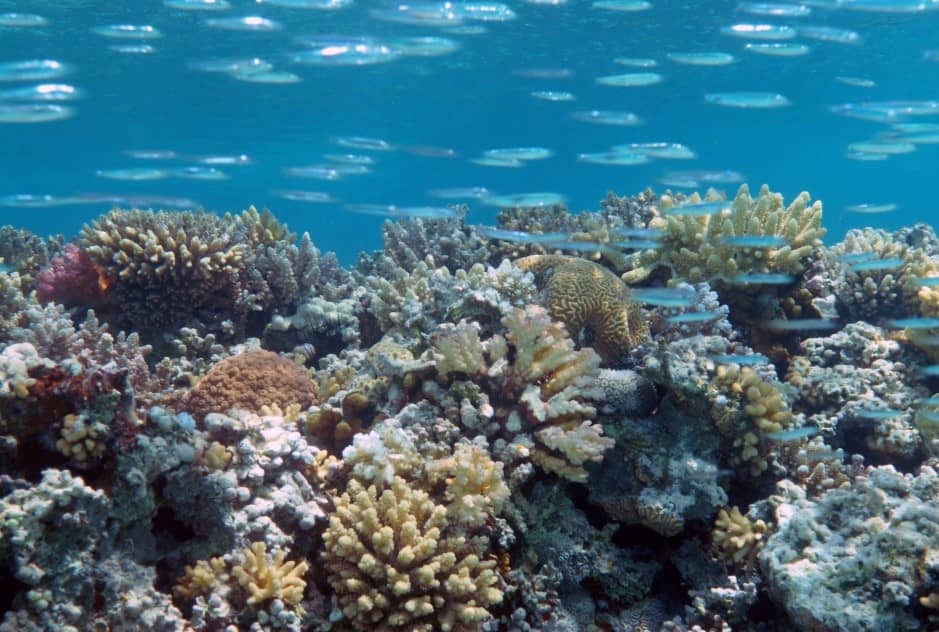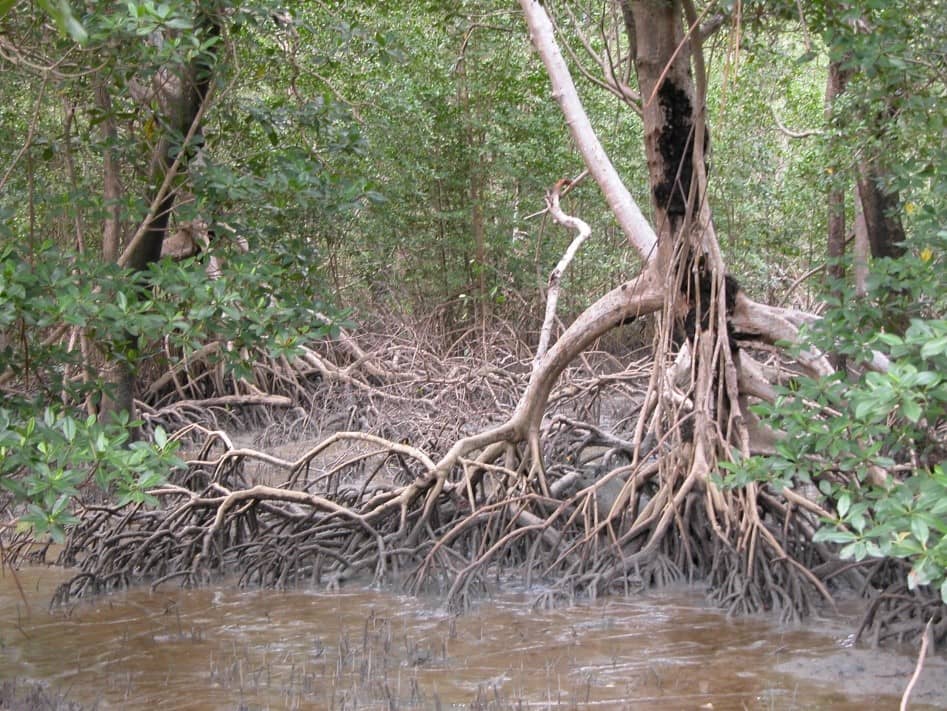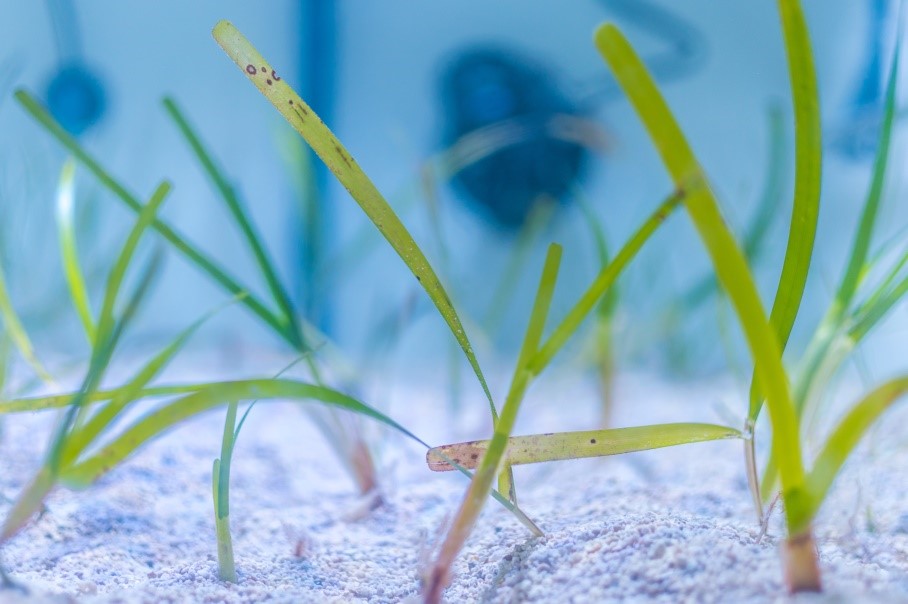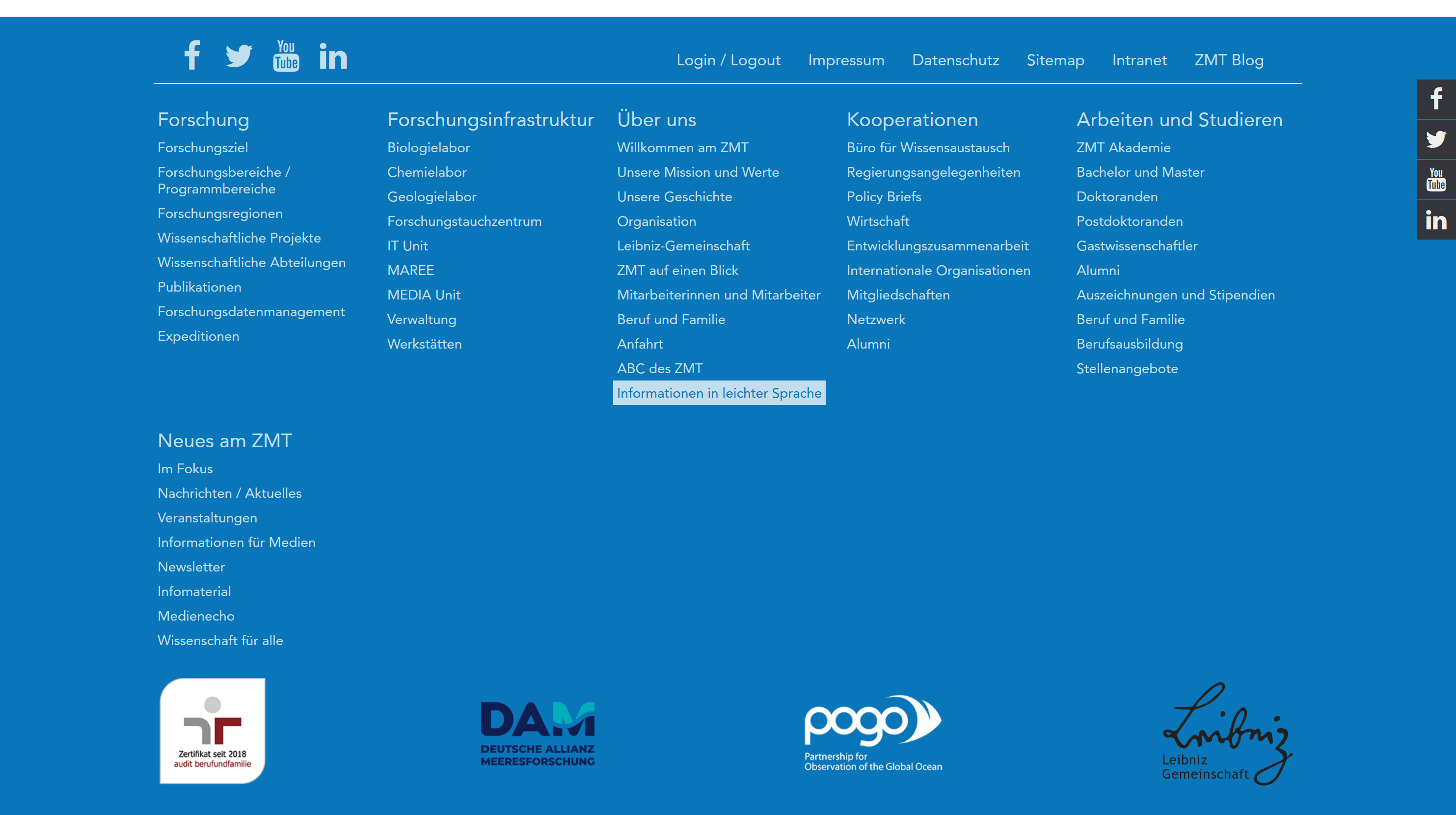You are on the website of the Leibniz Centre for Tropical Marine Research.
The Leibniz Centre for Tropical Marine Research is called ZMT for short
On this page you will find information about the ZMT in Easy Read.
The ZMT is a scientific institute in Germany.
The ZMT building is in Bremen.
Scientists work there.
Many of them are marine scientists.
The scientists at the ZMT conduct their research in a specific area of the earth.
It is the same temperature there all year round.
This area is called the tropics.
The tropics are located around the equator.
The equator divides the earth into the northern hemisphere and the southern hemisphere.
Scientists study the habitats in the area between land and sea in the tropics.
This area is the coast.
The researchers want to know how people, animals and plants live together there.
Such coastal habitats include coral reefs, mangrove forests and seagrass meadows.
Many animals live there.
For example, fish, crabs, corals, jellyfish and turtles.

Corals:
Corals look like colourful plants under water.
But they are small animals.
They live in groups in the sea.
They are called colonies.

Mangroves:
Mangroves are forests on the coasts in the tropics.
They usually grow in salt water.
They have large roots.
The roots separate a lot of salt from the water.

Seagrass meadows
Seagrasses are plants.
They grow on the sandy bottom in shallow seawater.
Seagrasses have roots and can flower.
They provide shelter and food for small animals.
The researchers at the ZMT are investigating, for example:
- How are habitats changing?
- What are the problems for habitats?
- What can humans do to protect habitats?
- How can humans utilise habitats without destroying them?
What areas are on this website?
The areas are shown on the white bar:

Publications:
Here you will find texts on the work of scientists at the ZMT.
The scientists explain
what they have discovered in their work.
These texts are also called publications.

Media:
Here you will find news and reports from the ZMT.
Here you will also find information for newspapers, radio and television, for example.

Jobs:
Here you can find information on whether the ZMT is looking for new employees for its work.

Contact:
Here you find the address and telephone number of the ZMT.

Menu ≡
Here you can find more areas of the website.
Here you can find more information about the ZMT.
For example:
- Who is responsible for what?
- What is the history of the ZMT?
- What does the ZMT do?
- How does the ZMT co-operate with other countries?

At the bottom on the blue bar you will also find information about the ZMT.
For example:
- Who works at ZMT?
- Where do people work at ZMT?
- What do the scientists do?
This information is not in Easy Read.
Unfortunately, not all texts on our website are available in plain language.
You are welcome to write us your opinion about this website.
You can write:
What you like on leibniz-zmt.de.
What annoys you.
Which topics are missing on leibniz-zmt.de.
Our e-mail address is:
Information on the Bremen Equal Opportunities for Disabled Persons Act
Here you will find a link to the Bremen Equal Opportunities for Disabled Persons Act.
The Bremen Disability Equality Act is called BremBGG for short.
Link: https://www.transparenz.bremen.de/vorschrift_detail/bremen2014_tp.c.124514.de#jlr-BGGBR2018pP16
This law deals with the rights of people with disabilities.
This German version of this text has been reviewed by the Büros für Leichte Sprache der Lebenshilfe für Menschen mit geistiger Behinderung Bremen e.V. (Office for Plain Language of Lebenshilfe für Menschen mit geistiger Behinderung Bremen e.V.).
Here you will find a link to the Büro für Leichte Sprache der Lebenshilfe für Menschen mit geistiger Behinderung Bremen e.V.:
https://lebenshilfe-bremen.de/angebote/buero-fuer-leichte-sprache/




